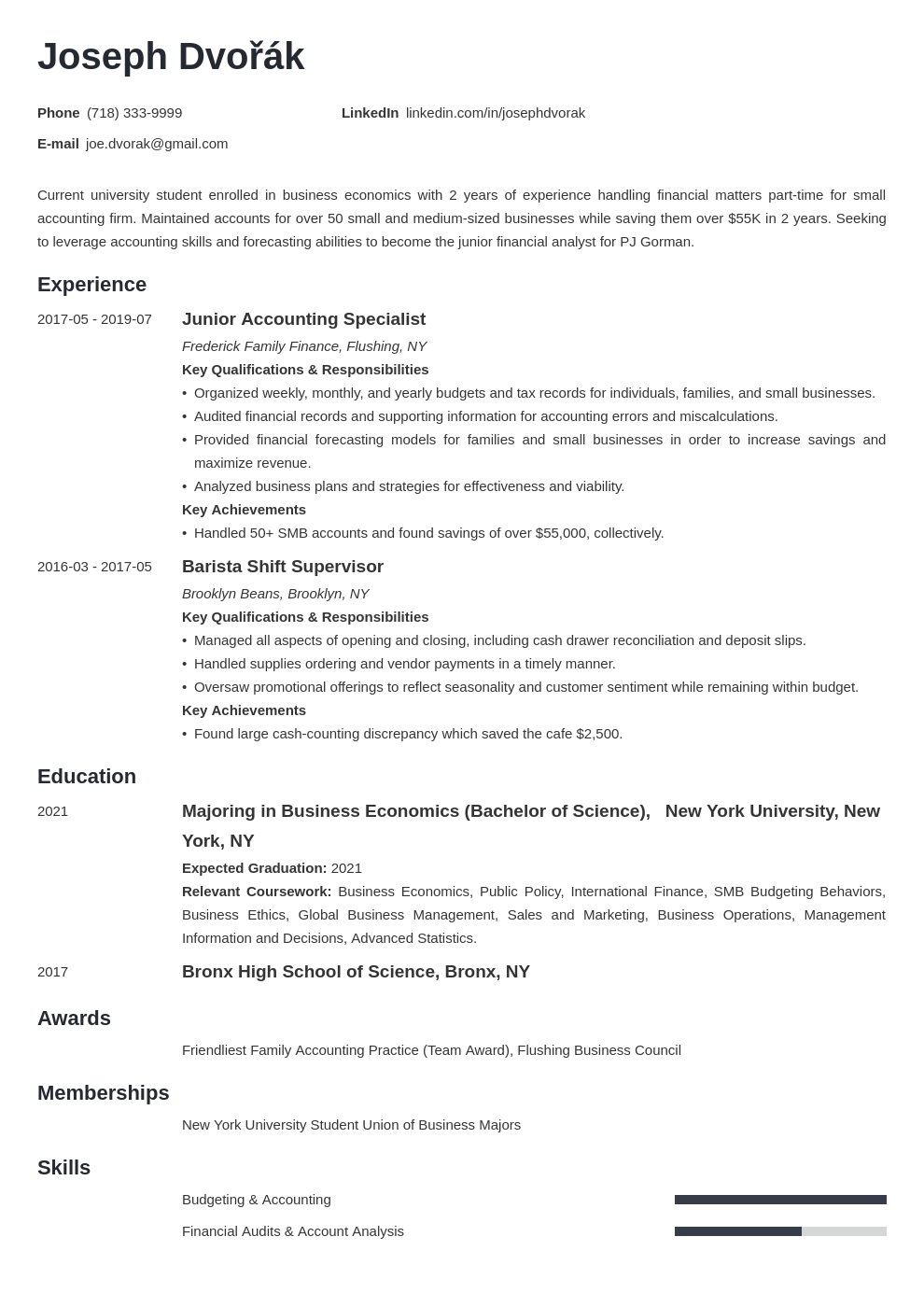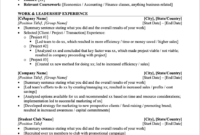Stepping into the professional world as an undergraduate can feel like navigating a maze blindfolded. You’re eager to gain experience, land that first internship, or even a part-time job, but how do you showcase your potential when your professional experience might be limited? It’s a common dilemma, and one that often starts with creating a compelling Curriculum Vitae, or CV.
That’s precisely why having a solid foundation is crucial. A well-structured CV not only highlights your academic achievements but also translates your extracurricular activities, volunteer work, and personal projects into valuable skills employers are looking for. This guide aims to provide you with the ultimate cv template for undergraduate students, helping you build a document that truly represents your budding capabilities and sets you apart from the crowd. Mastering the use of a good cv template for undergraduate students can truly be a game-changer.
What Your Undergraduate CV Absolutely Needs
Building a CV when you don’t have years of work experience might seem daunting, but it’s entirely achievable by focusing on your unique strengths and potential. Think of your CV not just as a record of your past jobs, but as a dynamic document that projects your future value. For an undergraduate, the emphasis shifts from extensive work history to showcasing academic prowess, transferable skills, and a strong drive to learn and contribute.
Your CV is your first impression, so clarity and relevance are paramount. While a seasoned professional might have pages of employment history, your focus should be on making every section count. We’re talking about strategically highlighting those experiences that demonstrate your readiness for the roles you’re applying for, even if they aren’t traditional jobs. Here’s a breakdown of the key sections every undergraduate CV should feature:
Essential Sections for Your Undergraduate CV
-
Contact Information: Simple, yet vital. Include your full name, phone number, professional email address, and LinkedIn profile URL (if you have one). Ensure your email is professional, e.g., “[email protected]” rather than a childhood nickname.

-
Education: This is often your strongest section as an undergraduate. List your university, degree, major(s), minor(s), expected graduation date, and GPA (if 3.0 or higher). You can also include relevant coursework, academic honors, scholarships, or Dean’s List achievements.
-
Relevant Experience: This isn’t just about paid jobs. Think about internships, volunteer work, part-time jobs, club leadership roles, research assistant positions, or even significant academic projects. Focus on responsibilities and achievements, quantifying them whenever possible (e.g., “managed a team of 5,” “increased event attendance by 20%”).
-
Projects & Leadership: Did you lead a campus club, organize an event, or complete a significant project in a course? These demonstrate initiative, teamwork, and problem-solving skills. Describe your role, the project’s goal, and its outcome.
-
Skills: Categorize your skills into sections like “Technical Skills” (e.g., programming languages, software, data analysis tools) and “Soft Skills” (e.g., communication, teamwork, leadership, problem-solving). Be specific and only include skills you genuinely possess.
-
Awards & Achievements: Any recognition, certifications, or notable accomplishments outside of your main academic record belong here. This could include competition wins, special recognitions, or professional certifications.
By thoughtfully populating these sections, you build a comprehensive picture of your capabilities. Remember, even seemingly small experiences can be framed to show valuable skills. An organized approach to these sections ensures that you’re presenting your best self to potential employers, despite your limited professional history.
The goal is to provide a snapshot of who you are, what you’ve accomplished, and what you’re capable of doing. Don’t underestimate the power of extracurriculars or academic projects; they often demonstrate transferable skills employers highly value, such as leadership, teamwork, and problem-solving.
Polishing Your CV to Shine
Crafting the content for your CV is one part of the equation; making it truly impactful is another. An effective CV isn’t just a list of facts; it’s a persuasive document designed to grab an employer’s attention and compel them to learn more about you. For undergraduate students, this means ensuring your CV stands out visually and communicates your strengths clearly and concisely.
Think of your CV as a marketing document where you are the product. Every word, every bullet point, and every design choice should serve the purpose of convincing the reader that you are a strong candidate. This section will guide you through the final touches that transform a good CV into a great one, ensuring it doesn’t just meet expectations but exceeds them.
Here are some essential tips to refine your CV and give it that professional edge:
-
Tailor Your CV for Each Application: This is perhaps the most critical tip. Never send a generic CV. Research the job description and the company culture. Then, subtly adjust your language and emphasize different experiences or skills on your CV to align with what the employer is looking for. Use keywords from the job posting naturally within your descriptions.
-
Use Action Verbs and Quantify Achievements: Start bullet points with strong action verbs like “managed,” “developed,” “analyzed,” “initiated,” or “collaborated.” Wherever possible, quantify your achievements with numbers, percentages, or frequencies. Instead of “Responsible for social media,” write “Managed social media accounts, increasing engagement by 15% over six months.”
-
Keep it Concise and Readable: For undergraduates, a one-page CV is ideal. Recruiters spend only a few seconds scanning each CV, so make sure yours is easy to read. Use clear headings, bullet points, and appropriate white space. Choose a professional, easy-to-read font (e.g., Arial, Calibri, Times New Roman) between 10-12 points for the body and slightly larger for headings.
-
Proofread Meticulously: Typos and grammatical errors can instantly discredit your application. Read your CV aloud, use grammar checkers, and ask a friend, career advisor, or professor to review it for you. A fresh pair of eyes can spot mistakes you’ve overlooked.
-
Consistent Formatting: Maintain consistency in your font sizes, bullet points, dates, and spacing. A consistent layout shows attention to detail and professionalism. Save your CV as a PDF unless otherwise specified, as this preserves formatting across different devices.
By implementing these strategies, your CV won’t just list your accomplishments; it will tell a compelling story about your potential. Remember, the goal is to make it easy for the recruiter to quickly grasp your value and invite you for an interview. Every element, from content to presentation, contributes to that ultimate objective.
Building a robust CV as an undergraduate is less about having a lengthy employment history and more about strategically showcasing your potential, transferable skills, and enthusiasm for learning. It’s about translating your academic achievements, extracurricular involvement, and personal projects into a compelling narrative that resonates with employers.
Take the time to refine each section, tailor it to specific opportunities, and ensure it’s perfectly polished. With a well-crafted CV in hand, you’ll not only feel more confident in your job search but also significantly increase your chances of landing those crucial interviews that kickstart your career journey. Embrace this opportunity to articulate your value and embark on the exciting path ahead!
